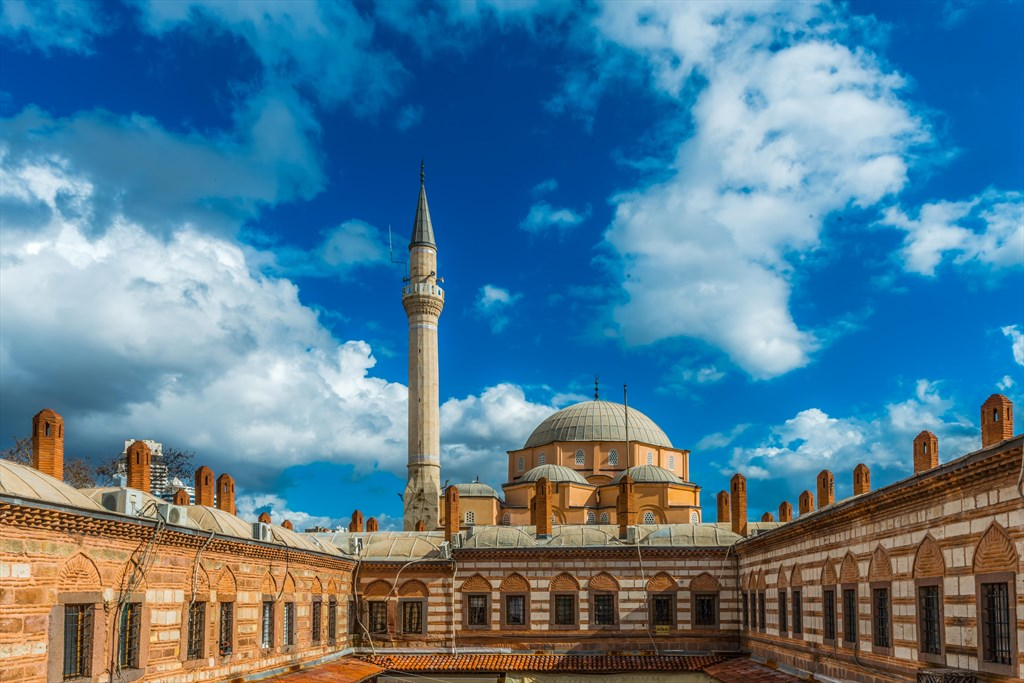Hisar Mosque
'Whoever goes there will be safe'. This verse from Quran will welcome you on top of the gate to Hisar Mosque, written on a gilded epigraph. This is the only place you can find peace and rest in the middle of never-ending hustle and bustle of Hisaronu.
This mosque is named after the citadel (hisar) located at the harbour mouth, which we explained to you as Port Citadel. There is no surviving construction epitaph, but this mosque is claimed to have been built in late 16th century, either on thousandth year of the Hegira (1591/92), or in Hegira 1006 (1597/98), by a patron called Molla Yakup. Evliya Celebi, who visited Izmir in 1671, mentions this mosque in his famous book Seyahatname (Book of Travels), telling us about epitaph of Hisar Mosque, which says it was built in Hegira 1000. Oikonomos, who wrote about history of Izmir in 1817, claims that this mosque was converted from a Latin church.
Featuring a minaret with only one balcony, large dome of Hisar Mosque stands on eight pendentive columns. It has three large domes on the sides, three smaller domes at the back, and 7 small domes on narthex. Mosque yard is visually enriched with a rather small rococo (1) style snow-cooled fountain-with-tank, and a marble fountain attached onto the wall. Outer yard, today crowded with rosary sellers and flower sellers, featured a library and a muvakkithane(2). Two tank-fountains at the outer yard are from 19th century.
Hisar Mosque was the largest mosque in Izmir during Ottoman era; it also has the richest gypsery works in Izmir. You can see curved branches, leaves, flowers, bunches of grapes, and star patterns on wall surfaces, altar, arches, windows, column headings, and inside the dome.
The most significant figure related to this mosque is Mehmet Rakim Elkutlu, one of the biggest composers of 20th century Classical Turkish Music, and also imam of this mosque. If you follow our marked route, you can see Rakim Elkutlu house as well.
The mosque was often repaired after suffering heavy damages from big earthquakes in 19th century. Minaret has collapsed after an earthquake in 1927; it was rebuilt by order of Kazim Dirik Pasha, Governor of Izmir at the time. Repaired for the last time after 2003 earthquake, this mosque is currently in a restoration program since 2017.
1 A flamboyant and decorated architectural style that emerged in France in 18th century.
2 Workshop and accommodation for mosque officials studying astronomy to determine the exact time for call to prayer.

.jpg)
.jpg)
.jpg)
.jpg)
.jpg)
.jpg)




.jpg)
.jpg)
.jpg)
.jpg)
.jpg)
.jpg)


Comments
No comment left, would you like to comment?